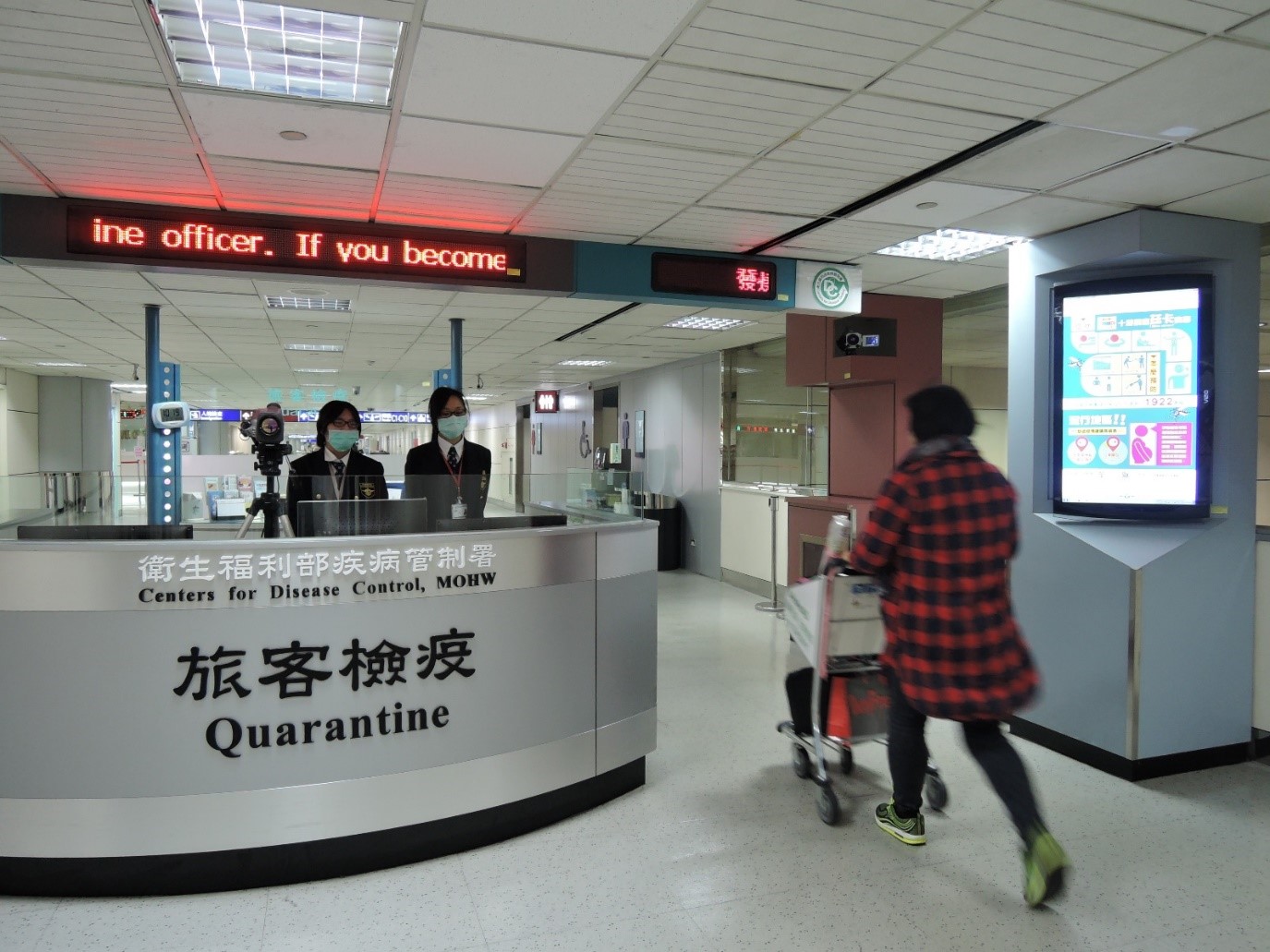Yellow Fever
Background
Yellow fever is an acute viral haemorrhagic disease transmitted by infected mosquitoes. The "yellow" in the name refers to the jaundice that affects some patients. Up to 50% of severely affected persons without treatment will die from yellow fever within 7 to 10 days of disease onset. The virus is endemic in tropical areas of Africa and Latin America, with a combined population of over 900 million people.
The yellow fever virus is an arbovirus of the Flavivirus genus, and the mosquito is the primary vector. Several different species of the Aedes mosquitoes transmit the virus. The mosquitoes either breed around houses (domestic), in the jungle (wild) or in both habitats (semi-domestic). There are three types of transmission cycles.
- Sylvatic (or jungle) yellow fever: In tropical rainforests, monkeys, which are the primary reservoir of yellow fever, are infected by wild mosquitoes. The infected monkeys then pass the virus to other mosquitoes that feed on them. The infected mosquitoes bite humans entering the forest, resulting in occasional cases of yellow fever.
- Intermediate yellow fever: In humid or semi-humid parts of Africa, small-scale epidemics occur. Semi-domestic mosquitoes infect both monkeys and humans. Increased contact between people and infected mosquitoes leads to transmission; many separate villages in an area can develop outbreaks at the same time. This is the most common type of outbreaks seen in Africa.
- Urban yellow fever: Large epidemics occur when infected people introduce the virus into densely populated areas with a high number of non-immune people and Aedes mosquitoes, primarily Aedes aegypti. Infected mosquitoes transmit the virus from person to person.
The yellow fever virus infection occurs in one or two phases. The first, "acute" phase usually causes fever, muscle pain with prominent backache, headache, shivers, loss of appetite, and nausea or vomiting. Most patients improve and their symptoms disappear after 3 to 4 days. However, 15% of patients enter a second, more toxic phase within 24 hours of the initial remission. High fever returns and several body systems are affected. The patient rapidly develops jaundice and complains of abdominal pain with vomiting. Bleeding can occur from the mouth, nose, eyes or stomach, and liver or kidney function deteriorates. Among those who enter the toxic phase, 20–50% may die within 7 to 10 days.
There is no specific treatment for yellow fever. Treatment is aimed at reducing the symptoms for the comfort of the patient. Supportive care to treat dehydration, respiratory failure and fever may improve outcomes for seriously ill patients.
Epidemiology
The number of yellow fever cases has increased over the past two decades due to declining population immunity to infection, deforestation, urbanization, population movements and climate change. 47 endemic countries in Africa (34) and Latin America (13), with a combined population of over 900 million, are at risk. A modelling study based on African data sources estimated the burden of yellow fever during 2013 was 84,000–170,000 severe cases and 29,000–60,000 deaths.There are no yellow fever cases in Taiwan.
Yellow Fever Surveillance in Taiwan
- Taiwan National Infectious Disease Statistics System–Yellow Fever
- Fever screening at international airports and seaports.
- Self–reporting through the toll–free 1922 hotline or local public health authority.
Figure: Fever screening at the Taiwan Taoyuan International Airport.

Prevention and Control
1. Vaccination
Vaccination is the most important preventive measure against yellow fever. A single dose of yellow fever vaccine is sufficient to confer sustained immunity and long protection against yellow fever disease. The vaccine provides effective immunity 10 days after vaccination for 90% of persons vaccinated. People should be vaccinated 10 days before departure.
People with the following conditions are recommended to receive additional doses:
(1) receive a booster dose, before traveling to endemic areas:
A. women who were vaccinated when pregnant.
B. people who received hematopoietic stem cell transplant following their last dose of yellow fever vaccine.
(2) receive a booster dose, before traveling to endemic areas if more than 10 years had passed after the last dose:
A. people who are HIV-infected.
B. people who will be in a higher-risk setting based on season, location, activities, and duration of their travel.
(3) laboratory workers who routinely handle wild-type yellow fever virus should receive a booster dose every 10 years.
The vaccine is contraindicated for:
(1) infants aged less than 6 months;
(2) people with severe allergies to a vaccine component such as egg protein;
(3) people with severe immunodeficiency due to symptomatic HIV infection, or malignant neoplasms, or thymus disorder, or immunosuppressive and immunomodulatory therapies.
People with the following conditions may be at increased risk of developing adverse events, but may benefit from vaccination. It may be necessary to vaccinate these people if travels to endemic areas cannot be avoided:
(1) age: 6 to 8 months
(2) age: ≥60 years
(3) asymptomatic HIV infection
(4) pregnancy
(5) breastfeeding
People with high fever or acute infections should delay vaccinations until the condition is stable.
Travelers, particularly those arriving to Asia from Africa or Latin America, must have a certificate of yellow fever vaccination. If there are medical grounds for not getting vaccinated, International Health Regulations state that this must be certified by the appropriate authorities.
2. Mosquito control
The risk of yellow fever transmission in urban areas can be reduced by eliminating potential mosquito breeding sites and applying insecticides to water where they develop in their earliest stages. Historically, mosquito control campaigns successfully eliminated Aedes aegypti, the urban yellow fever vector, from most mainland countries of Central and South America. However, this mosquito species has re-colonized urban areas in the region and poses a renewed risk of urban yellow fever.
3. To prevent getting yellow fever through mosquito bites, use insect repellents, wear long-sleeved shirts and long pants, and avoid outdoor activity at peak biting times.
FAQs
1. What is yellow fever?
Yellow fever is an acute viral haemorrhagic disease transmitted by infected mosquitoes. Up to 50% of severely affected persons without treatment will die from yellow fever. The yellow fever virus is an arbovirus of the Flavivirus genus, and the mosquito is the primary vector. The yellow fever virus infection usually causes fever, muscle pain with prominent backache, headache, and nausea or vomiting, and 15% of patients rapidly develop jaundice and more severe symptoms. There is no specific treatment for yellow fever. Travelers, particularly those arriving to Asia from Africa or Latin America, must have a certificate of yellow fever vaccination.
2. What is the treatment for yellow fever?
There is no specific treatment for yellow fever. Treatment is aimed at reducing the symptoms for the comfort of the patient. Supportive care to treat dehydration, respiratory failure and fever may improve outcomes for seriously ill patients.
3. How to reduce the risk of acquiring yellow fever?
(1) Vaccination
Vaccination is the most important preventive measure against yellow fever. A single dose of yellow fever vaccine is sufficient to confer sustained immunity and long protection against yellow fever disease.
(2) Mosquito control
The risk of yellow fever transmission in urban areas can be reduced by eliminating potential mosquito breeding sites and applying insecticides to water where they develop in their earliest stages.
(3) To prevent getting yellow fever through mosquito bites, use insect repellents, wear long-sleeved shirts and long pants, and avoid outdoor activity at peak biting times.
More Information
- 1. WHO|Yellow Fever
- 2. USA CDC|Yellow Fever
- 3. ECDC|Yellow Fever
圖片



